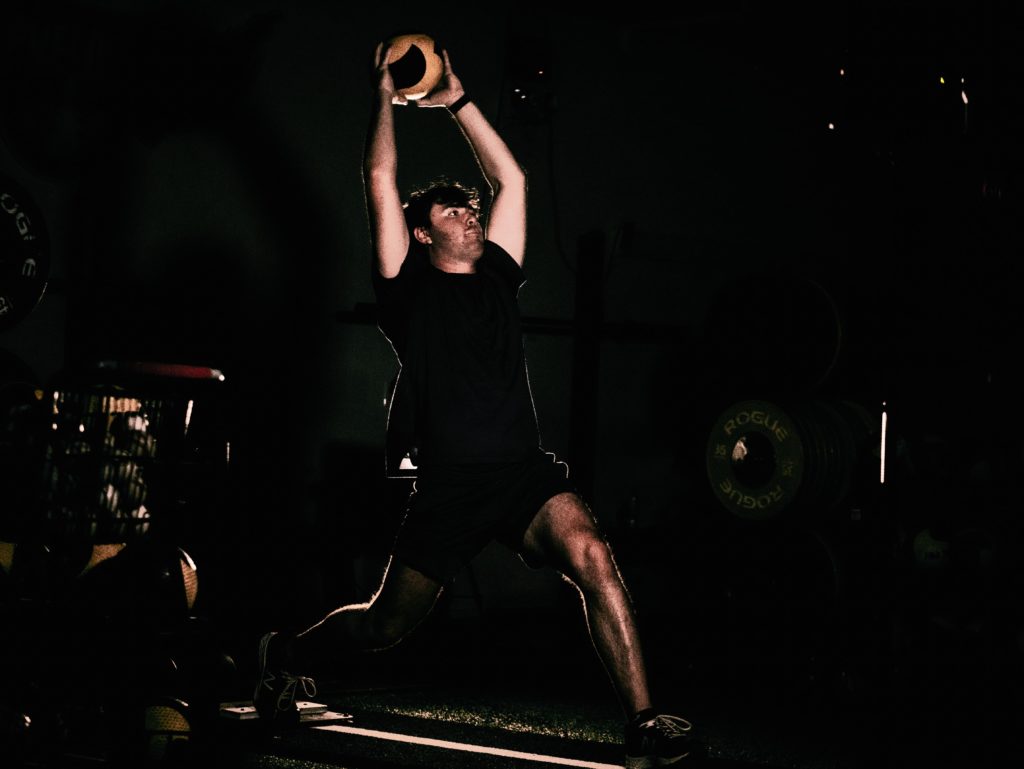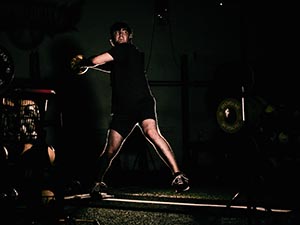Top Pitching Velocity Drills to add 5-10+mph to your Fastball
If you're a pitcher, you know how important velocity is. So, what could possibly be better than increasing pitching velocity? But what you might not know is that studies show that high velocity pitchers generate more ground reaction forces than low velocity pitchers and just how this relates to seeing an increase in pitching velocity. Put simply, high velocity pitchers are able to transfer the force generated from the ground into their pitches more efficiently, all while utilizing less energy.
Traditional Coaching and Development of Pitching Velocity is the problem
In the age of artificial intelligence, it's important for coaches to stay current with the latest advancements in sports science. When it comes to pitching velocity, conventional wisdom just isn't enough anymore. High-speed cameras and motion analysis have allowed us to see and understand the mechanics of pitching in a whole new way. And yet, there are still coaches who rely on the same outdated methods they were taught when they were young players. This not only limits a pitcher's potential but can also lead them to turn to illegal performance-enhancing drugs in search of an edge. When it comes to pitchers, coaches have a duty to protect them from injury and enhance their performance. Unfortunately, some coaches are resistant to change and cling to outdated methods and information. This can lead to pitchers throwing too many pitches, which can cause arm injuries, or relying on ineffective techniques that can actually lead to decreased performance.
Technology and modern research have come a long way in helping coaches optimize their pitchers' performance. By embracing these new methods, coaches can help pitchers throw more efficiently and with less risk of injury. Additionally, using technology can help coaches track their players' progress and make necessary adjustments during the season. If you want to see true progress, you have to set goals and be willing to reevaluate yourself based upon where you are in reaching those goals. A pitcher should reevaluate his progress every two weeks, at the bare minimum once a month.
Everything discussed above is important for the safety and success of pitchers. It's time for coaches to embrace technology and modern research in order to truly optimize their players' performance and minimize their risk of injury.
How do you develop more power to increase pitching velocity?
The answer is twofold: first, by drills that are specifically designed to help you do so; and second, by having a strength and conditioning program that focuses on power production. The debate about the impact of strength and conditioning programs on pitching velocity has been ongoing for years in the baseball community. However, a growing body of research is showing a clear link between increased strength and improved throwing velocity. In a recent study published in the Journal of Strength and Conditioning Research, artificial intelligence was utilized to analyze "two groups of high-school baseball players before and after completing a 12-week resistance exercise program" (3). The results proved there is a significant relationship to players' overall power and ball velocity. This is just one example of countless studies demonstrating the effectiveness of strength training for pitchers. It's time to retire the outdated belief that these programs have no impact on throwing velocity and embrace the benefits they can bring to players' performance.
3X Med-Ball Drills for Increasing Pitching Velocity and Mechanical Development
If you're looking to build up your pitching velocity and add a few extra miles per hour to that fastball, the 3x medicine-ball drills are the way to go. These drills require proper sequencing of your kinetic chain in order to perform them correctly. Medicine-ball drills are key to building the often-overlooked smaller muscles that are just as important if you want to develop the 90+mph fastball. It's been proven that any decrease in lower half power requires an increase in shoulder rotational velocity to maintain the same level of force at release. This is powerful proof that the most effective approach to increasing pitching velocity is through power production and motor coordination of the lower half. So not only do these drills build up strength, but they also train your body to have efficient mechanics for maximum throwing velocity. Give them a try and watch your pitch speed soar.
If you are tired of throwing the same old fastball, barely reaching the 80 mph mark. It's time to increase your pitching velocity and impress your coach and teammates with a brand new pitch. The drills listed below, which are taken from the 3X Pitching Velocity Program, are scientifically proven med-ball drills to help build pitching velocity and propel your fastball up at least 5-10 mph. Don't let the unfamiliar terminology scare you; visit www.TopVelocity.net/patreon for more information on the program's research and approach. And if you have any questions, don't hesitate to contact me for more resources and guidance on how to improve your pitching velocity.
3X Med Ball Chest Up Series - This series of throws use a 2lb medicine ball to teach the pitcher how to generate ground reaction forces through the stride and transfer these forces into the trunk movements to fire the arms and generate velocity. In the chest up position, this prevents the pitcher from only using the shoulders and arms to generate the velocity.
3X Med Ball Separation Series - This series is also with the 2lb medicine ball and converts the transfer of forces from the stride into trunk rotation or hip to shoulder separation. Studies link more hip to shoulder separation to increased pitching velocity (2).
3X Med Ball Lateral Series - This series is similar to the previous two but is performed in a lateral foot position as opposed to the linear foot position of the previous drills.
3X Chest Up Target Throws Series - This series of throws replaces the med balls with the baseball. The goal is to keep the same motor coordination of the movements performed with the med ball when throwing the baseballs.
3X Separation Target Throws Series - This series of throws is similar to the previous ones but converts the stride power into hip to shoulder separation.
The 3X Sled - This drill uses a sled to apply resistance to the hips which forces the pitcher to initially align the force vector into a linear position while building flexion to then have the ability to drive the sled through the stride. This drill along with the next one is so effective when training a more explosive stride that converts into hip and trunk rotation.
3X Assistance Drills - This drill will prove the physics of 3X Pitching and its effect on increasing pitching velocity. As the pitcher moves through the drill, assistance is applied to the back hip to increase ground reaction forces at front foot strike. If the pitcher can effectively and efficiently convert this into more hip to shoulder separation the pitcher throws harder.
3X Drive Drills - These high intensity drills force the pitcher to enhance explosive stride power while increasing stride distance.
Force Vector Throws (Level 3) - This is another series of more advanced 3X Pitching drills that mainly focus on the load position. It helps the pitcher build muscle memory around the load position.
3X Power Throws - This is the 3X Pitching alternative to long toss. The challenge of long tossing is keeping the same mechanics that the high velocity pitcher uses when on the mound. These throws prevent you from changing these 3X pitching mechanics when increasing your distances.
Medicine Ball Correlation to Trunk rotation velocity and Pitching Delivery
Perhaps this all seems new to you, and you are struggling to understand how these med-ball drills could have such a dramatic impact on throwing velocity and how they can develop you into a high velocity pitcher. In that case, let's pull out some scientific research, that shows the correlation between med-ball drills and how they affect trunk rotation and promote a more efficient pitching delivery. When it comes to throwing a ball with speed and precision, having strong arm muscles is not enough. Developing trunk rotation and core strength are also important factors in pitching performance. While various exercises can help improve these aspects of pitching, a recent study showed that medicine ball throws had the strongest correlation with increased throwing velocity (1). These exercises allow for a more natural mimicking of the pitching motion, and proper utilization of the kinetic chain to maximize trunk rotational forces and efficiently transfer the energy through the arm. So next time you hit the weight room, consider adding some medicine ball throws into your routine to improve your pitching game.
The top Pitching Velocity Program to add 5-10+mph to your fastball
The 3X Pitching Velocity Program isn't just a gimmick - it's based on solid scientific principles and has been proven to add 5-10+mph to pitchers' fastballs. And unlike some approaches that rely on mysterious or untested methods, this program uses the same tried-and-true techniques employed by Olympic throwers for decades. The program includes a rigorous schedule of drills, lifts, and exercises designed to not only increase pitching velocity but also improve pitching technique. Thousands of pitchers have already experienced the benefits of this program, adding an impressive 5-10+ mph to their fastballs. So why not join them and take your pitching game to the next level with the 3X Pitching Velocity Program? With the latest in player analysis utilizing Artificial intelligence, you can be sure you are getting the best player analysis that will provide you with the knowledge and plan on how to move forward with your training to maximize your pitching velocity.
If you are looking for more pitching tips like these checkout www.Topvelocity.net/patreon to stay up to date with my latest drills and instructional content. Take your game to the next level today!
Pitching Velocity References
- Jay W. Young, Oral Examination Committee, Dr. James Onate, Advisor Dr. Ajit Chaudhari, Co-Advisor. – Trunk Contributions to Baseball Pitching Velocity – An Undergraduate Senior Thesis Presented in Accordance with the Requirements for Graduation with Research Distinction in Biomedical Engineering. – The Ohio State University, Columbus, Ohio 43210
- Glenn S. Fleisig, James R. Andrews, et al. – Comparison Of High Velocity And Low Velocity Pitch Deliveries. – American Sports Medicine Institute 2007.
- Szymanski, David J et al. “The relation between anthropometric and physiological variables and bat velocity of high-school baseball players before and after 12 weeks of training.” Journal of strength and conditioning research vol. 24,11 (2010): 2933-43. doi:10.1519/JSC.0b013e3181f0a76a








